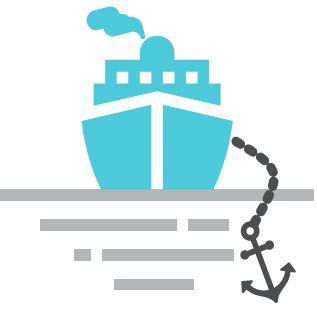In the face of an emergency, staying calm and communicating clearly can be the difference between life and death. But with adrenaline it’s easy to forget the right protocols. This article will equip you with the knowledge to navigate distress, urgency, and safety messages.
We’ll break down the crucial differences between these categories, ensuring you send the most appropriate message to get the help you need, fast. Remember, understanding the difference between distress urgency and safety messages can make all the difference in an emergency situation, whether you’re on land, at sea, or in the air.
Urgency and Safety communications relate to:
a Navigational and meteorological warnings
b Ship to ship safety of navigation.
c Ship reporting.
d Support communications for SAR operations.
e Medical advice and transports.
e Other urgent or safety messages.
Urgency
The urgency signal PAN PAN indicates that a very important message is to follow concerning the safety of a ship, aircraft or other vehicle, or the safety of a person. The urgency signal and the message which follows is sent on a distress frequency. However, in the case of a long message or a medical call in a area of a heavy traffic, or when the message is being repeated, then it is sent on a working frequency after an announcement using the Digital Selective Calling-DSC During Disasters or Emergenciesurgency signal on an appropriate distress frequency.
The urgency call format using R/T is:
ALL STATIONS (×3) or NAMED STATION (×3)
THIS IS
CALL SIGN or IDENTIFICATION (×3)
The format of the message should then be similar to the example shown:
THIS IS NONSUCH
ONE ZERO MILES WEST OF SKERRIES
LOST PROPELLER DRIFTING WEST SOUTH AT THREE
KNOTS
REQUIRE TOW URGENTLY
OVER
When using NBDP, the urgency message is preceded by the urgency signal PAN PAN and the identification of the transmitting station.
Medical Advice
Most coast stations around the world provide a medical advice service.
When using R/T, the urgency signal PAN PAN (×3) should be used for the call. The message which then follows should be addressed to the nearest coast station, using the published preamble shown in the ITU List of Radiodetermination and Special Service Stations. In many instances, though, it may be preferable to place a telephone call to a doctor.
Charges
As noted in Recommendation ITU-T D90 (see in the ITU Manual for Use by the Maritime Mobile and Maritime Mobile-Satellite Services), no charge is raised, against the originating maritime mobile station, for communications using the maritime mobile service which relate to medical advice provided to both:
1 they are exchanged directly between mobile stations and
- land stations shown in the ITU List of Radio-determination and Exploring Radio Paths, Spectrum, and Propagation MechanismsSpecial Service Stations as providing such a service;
- or land stations which offer the service;
2 they are addressed in accordance with the conditions published in the above List, or as specified by the satellite service operator.
Any land station and landline charges for medical advice communications will be billed to the appropriate shore authority.
The medical message should contain:
POSITION
NEXT or NEAREST PORT with ETA
PATIENTS DETAILS (i. e., name, age, sex, medical history, etc.)
PATIENTS SYMPTOMES and ADVICE REQUIRED
MEDICATION CARRIED ON BOARD
Example:
To contact Land’s End Radio, UK, use:
MEDICO LANDSEND RADIO
When using telex, the prefix MED+ should be used to gain priority.
World-wide, medical advice and assistance can be obtained via coast stations, coast-guard stations or via Inmarsat CESs. Further information will be found in the ITU List of Radiodetermination and Special Service Stations, and the Inmarsat Communications Handbook.
The IMO International Code of Signals contains medical (3-letter) codes. Use of such codes should be proceeded by the word INTERCO, which indicates that such codes are about to be used.
Medical transports
Distinctive signals may be used by medical units or transports for communications relating to persons protected in time of war. The term medical transports, as defined by the Geneva Conventions and Additional Protocols, 12 August 1949, refers to any means of transportations by land, sea or air used to assist the wounded, the sick and the shipwrecked. Neutral vessels should provide such assistance when requested by one or other of warring parties and are afforded protection from any hostile actions.
Read also: GMDSS Distress Urgency and Safety Communications
For the purpose of announcing and identifying medical transports which are protected by the Geneva Convention, the radio signal shall consist of the urgency signal as described by Radio Regulations followed immediately by the addition of the single word Medical in NBDP mode and by the addition of the simple word MAY-DEE-CALL, i. e., pronounced as in French “medical”, in radiotelephony.
When using radiotelephony, the urgency signal PAN PAN (×3) should be used for the call.
The radio message, preceded by the urgency signal, must convey the following data relating to the medical transports concerned:
(a) Call sign or other means of identification;
(b) position;
(c) number and type of units;
(d) intended route;
(e) estimated time en route and of departure and arrival, as appropriate;
(f) any other information, such as flight altitude, radio frequencies guarded, languages used and secondary surveillance radar modes and codes.
In order to facilitate communications, one or more of the parties to a conflict may designate frequencies to be used for such communications.
Safety
The safety signal SECURITE indicates that an important meteorological or navigational warning is about to follow. The message is sent on a working frequency after an announcement on the distress frequency. Most safety calls and messages are sent upon receipt and at the end of the next silence period. As well as the distress frequencies already mentioned, VHF channel 13 is used as an intership navigation safety channel. Other channels may be designated by local coast-guard organizations for inshore warnings.
An example of a safety call format and signal would be:
ALL STATIONS (×3)
THIS IS
CALL SIGN / IDENTIFICATION (×3)
LISTEN …… FOR NAVIGATIONAL WARNING
ON FREQUENCY / CHANNEL …
On a GMDSS ship you should send a “All Ships” safety call on DSC channel 70 or 2187,5 kHz indicating the working frequency could be:
An example of the safety message sent on the working frequency could be:
ALL STATIONS – ALL STATIONS – ALL STATIONS
THIS IS NONSUCH, NONSUCH, NONSUCH
LARGE RED CONTAINER SPOTTED AT 1030 UTC IN POSITION
52.02 NORTH 003.36 WEST
VESSELS KEEP SHARP LOOKOUT AND REPORT,
OUT

